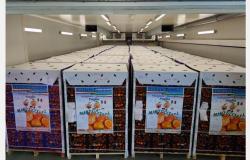The role of a carbon sink is to capture and store CO2 present in the atmosphere. It is the main tool for achieving carbon neutrality, that is to say the objective set out in the Paris Agreement in 2015 for all countries, and also at the national level since France must be carbon neutral. by 2050.
What is a natural carbon sink?
A carbon sink is a terrestrial or marine ecosystem (forest, peat bog, meadow, hedgerow, phytoplankton, etc.) which naturally captures CO2 by photosynthesis and stores it in wood, soils, sediments, etc. CO2 also dissolves in the oceans.
These ecosystems are integral parts of climate change adaptation and mitigation policies, to which they are also vulnerable; and this is the heart of the problem. ADEME estimates that 4 to 5 billion tonnes of carbon are stored in the soils and forests of mainland France. However, if we destroy these sinks or if we seriously damage them, this stored carbon could be returned to the atmosphere.
Why are carbon sinks not sufficiently protected?
Protecting these different ecosystems allows us to limit the consequences of climate change, by guaranteeing CO2 storage. But, to achieve this, certain protective actions lead to changes in practices and usage which are sometimes difficult to accept. For example, we can decide to limit the cutting of trees in forests or to modify agricultural practices, such as the establishment of a plant cover on the soil throughout the year, or even to drastically limit the artificialization of environments and soils.
Decision-makers and communities must therefore make political choices and trade-offs. However, the urgency to protect our carbon sinks is real. A scientific report published in July 2024 reports an alarming situation: in 2023, the hottest year on record, forests and soils have only absorbed between 1.5 billion and 2.6 billion tonnes of CO2 while they had stored 9.5 billion in 2022.
Remember that in 2023, global CO2 emissions from fossil fuels increased by 0.6%. This may seem insignificant, but given the reduction in CO2 storage capacity of ecosystems, this is not good news.
The threat is global, because of megafires or droughts, but France is not spared. The High Council for the Climate, in its 2024 annual report, indicated that our carbon sinks had absorbed half as much carbon over the last ten years.
What solutions?
There is only one response to this threat: significantly reduce our greenhouse gas emissions. To achieve this, we must rethink our lifestyles and our professional practices, and embark on the path to sobriety. Innovative projects, sharing, solidarity, which are also the values of the Department of Nièvre, will be mobilized and implemented to design a desirable future for Nièvre, by 2050.






